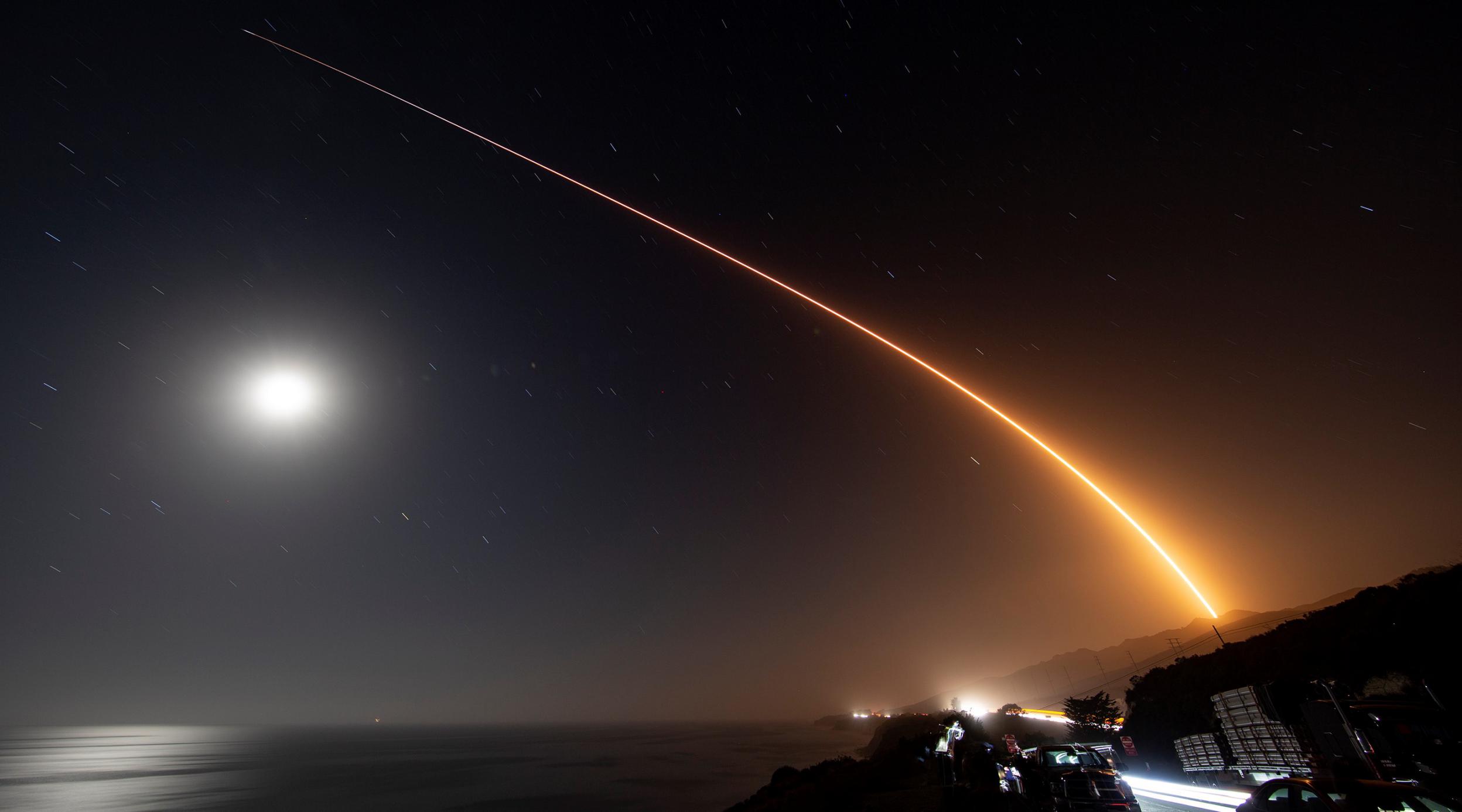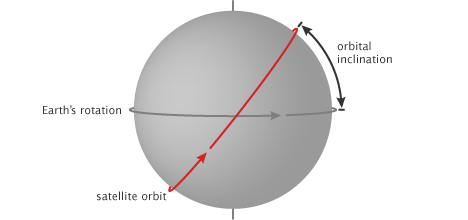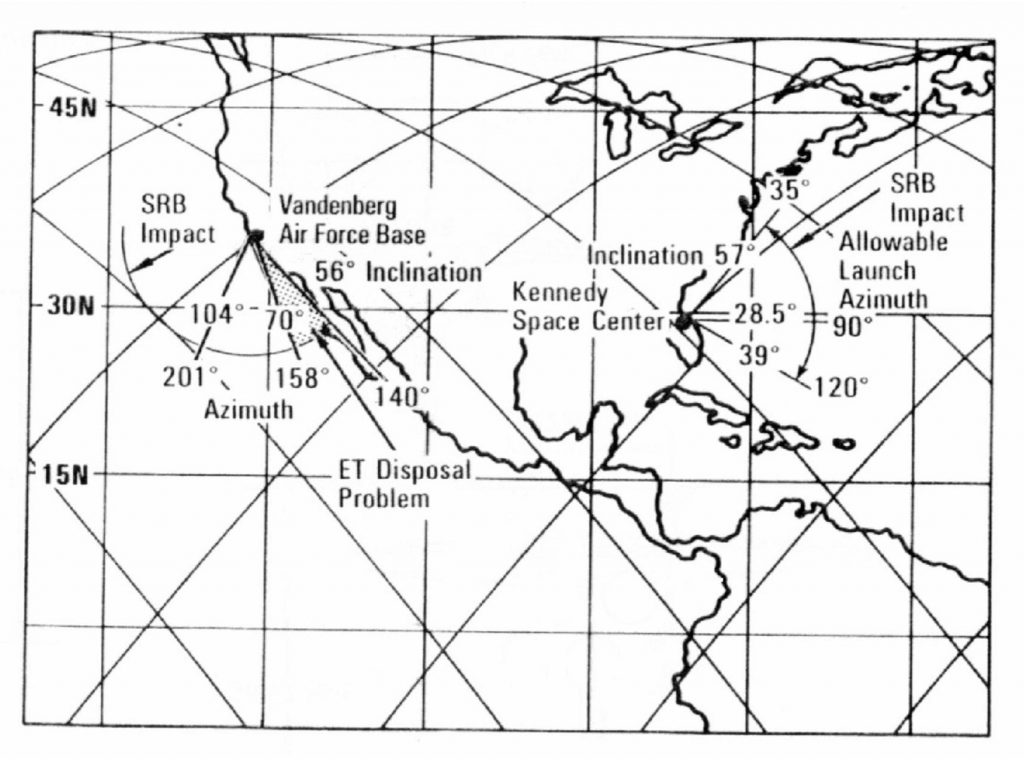

News
SpaceX’s next West Coast Starlink launch is heading to an unexpected orbit
SpaceX has unexpectedly changed the Earth orbit its next Starlink launch is targeting.
Like all planned Starlink launches, the latest batch of satellites will ultimately raise themselves into a circular orbit around 550 kilometers (~340 mi) above Earth’s surface. However, beyond the basic orbital altitude, the mission will be completely different than previously expected.
Before SpaceX released details about the launch, which is now scheduled no earlier than (NET) 1:46 am PDT (UTC-8) on Friday, December 17th 1:24 am PDT (09:24 UTC) on Saturday, December 18th, it was believed the mission was called Starlink 2-3, or the third launch of a second ‘shell’ or group of satellites. SpaceX’s initial ~4400-satellite Starlink constellation is distributed into five different ‘shells’ – all with similar orbits between 540 and 570 km. What mainly differentiates each shell is orbital inclination, which refers to the tilt of an object’s orbit around a celestial body.
Contrary to what most expected, instead of the second dedicated Starlink launch for the constellation’s 70-degree shell (“Group 2”), SpaceX’s December 17th launch – known as Starlink 4-4 – will actually carry the third batch of “Group 4” satellites to an inclination of 53.22 degrees. Aside from once again skipping over Starlink 4-2, which has yet to launch for unknown reasons and was already leapfrogged by Starlink 4-3 earlier this month, Starlink 4-4 will also be launching out of SpaceX’s West Coast pad, while all thirty-one other dedicated 53-degree Starlink missions have launched out of Cape Canaveral, Florida.
A 53-degree launch out of Vandenberg Space Force Base, California is unusual because, up to now, it’s been unable to regularly launch to inclinations lower than approximately 56 degrees. Any lower (further east) and the rocket would end up overflying populated areas in Baja California or even the southwest coast of Mexico. For obvious reasons, the US FAA and other countries are not a fan of having what amounts to a high-velocity explosive device fly over populated areas.
The only apparent way SpaceX could launch to 53 degrees from Vandenberg is if Falcon 9 performs a dogleg maneuver several minutes after launch, effectively conducting a (slight) left turn mid-flight. While seemingly simple, even a minor few-degree dogleg maneuver can cost an intuitively large amount of delta-V, potentially significantly reducing the amount of payload a rocket can launch to a given orbit. For Starlink missions, maximizing payload to orbit is perhaps the single most important way (beyond reusability) SpaceX is able to reduce launch costs.
However, according to the prelaunch information SpaceX provided Celestrak, Starlink 4-4 will launch 52 V1.5 satellites into orbit – just one less than an equivalent launch (Starlink 4-1) from the East Coast. If SpaceX only needs to reduce an optimal stack of 53 V1.5 satellites to 52 to pay for Starlink 4-4’s dogleg maneuver, it’s technically only raising the average launch cost per satellite or unit of network bandwidth by less than 2%. That’s not a bad trade given that it could allow SpaceX to expand the number of launch pads capable of supporting the most common Starlink launches from two to three – a 50% increase. At the end of the day, deploying as many mid-inclination Starlink satellites as quickly as possible is likely the fastest way to expand network capacity, add Starlink subscribers, and thus grow revenue.
News
Tesla begins Robotaxi certification push in Arizona: report
Tesla seems serious about expanding its Robotaxi service to several states in the coming months.

Tesla has initiated discussions with Arizona transportation regulators to certify its driverless Robotaxi service in the state, as per a recent report from Bloomberg News. The move follows Tesla’s launch of its Robotaxi pilot program in Austin, Texas, as well as CEO Elon Musk’s recent comments about the service’s expansion in the Bay Area.
The Arizona Department of Transportation confirmed to Bloomberg that Tesla has reached out to begin the certification process for autonomous ride-sharing operations in the state. While details remain limited, the outreach suggests that Tesla is serious about expanding its driverless Robotaxi service to several territories in the coming months.
The Arizona development comes as Tesla prepares to expand its service area in Austin this weekend, as per CEO Elon Musk in a post on X. Musk also stated that Tesla is targeting the San Francisco Bay Area as its next major market, with a potential launch “in a month or two,” pending regulatory approvals.
Tesla first launched its autonomous ride-hailing program on June 22 in Austin with a small fleet of Model Y vehicles, accompanied by a Tesla employee in the passenger seat to monitor safety. While still classified as a test, Musk has said the program will expand to about 1,000 vehicles in the coming months. Tesla will later upgrade its Robotaxi fleet with the Cyercab, a two-seater that is designed without a steering wheel.
Sightings of Cybercab castings around the Giga Texas complex suggests that Tesla may be ramping the initial trial production of the self-driving two-seater. Tesla, for its part, has noted in the past that volume production of the Cybercab is expected to start sometime next year.
In California, Tesla has already applied for a transportation charter-party carrier permit from the state’s Public Utilities Commission. The company is reportedly taking a phased approach to operating in California, with the Robotaxi service starting with pre-arranged rides for employees in vehicles with safety drivers.
News
Tesla sets November 6 date for 2025 Annual Shareholder Meeting
The automaker announced the date on Thursday in a Form 8-K.

Tesla has scheduled its 2025 annual shareholder meeting for November 6, addressing investor concerns that the company was nearing a legal deadline to hold the event.
The automaker announced the date on Thursday in a Form 8-K submitted to the United States Securities and Exchange Commission (SEC). The company also listed a new proposal submission deadline of July 31 for items to be included in the proxy statement.
Tesla’s announcement followed calls from a group of 27 shareholders, including the leaders of large public pension funds, which urged Tesla’s board to formally set the meeting date, as noted in a report from The Wall Street Journal.
The group noted that under Texas law, where Tesla is now incorporated, companies must hold annual meetings within 13 months of the last one if requested by shareholders. Tesla’s previous annual shareholder meeting was held on June 13, 2024, which placed the July 13 deadline in focus.
Tesla originally stated in its 2024 annual report that it would file its proxy statement by the end of April. However, an amended filing on April 30 indicated that the Board of Directors had not yet finalized a meeting date, at least at the time.
The April filing also confirmed that Tesla’s board had formed a special committee to evaluate certain matters related to CEO Elon Musk’s compensation plan. Musk’s CEO performance award remains at the center of a lengthy legal dispute in Delaware, Tesla’s former state of incorporation.
Due to the aftermath of Musk’s legal dispute about his compensation plan in Delaware, he has not been paid for his work at Tesla for several years. Musk, for his part, has noted that he is more concerned about his voting stake in Tesla than his actual salary.
At last year’s annual meeting, TSLA shareholders voted to reapprove Elon Musk’s compensation plan and ratified Tesla’s decision to relocate its legal domicile from Delaware to Texas.
Elon Musk
Grok coming to Tesla vehicles next week “at the latest:” Elon Musk
Grok’s rollout to Tesla vehicles is expected to begin next week at the latest.

Elon Musk announced on Thursday that Grok, the large language model developed by his startup xAI, will soon be available in Tesla vehicles. Grok’s rollout to Tesla vehicles is expected to begin next week at the latest, further deepening the ties between the two Elon Musk-led companies.
Tesla–xAI synergy
Musk confirmed the news on X shortly after livestreaming the release of Grok 4, xAI’s latest large language model. “Grok is coming to Tesla vehicles very soon. Next week at the latest,” Musk wrote in a post on social media platform X.
During the livestream, Musk and several members of the xAI team highlighted several upgrades to Grok 4’s voice capabilities and performance metrics, positioning the LLM as competitive with top-tier models from OpenAI and Google.
The in-vehicle integration of Grok marks a new chapter in Tesla’s AI development. While Tesla has long relied on in-house systems for autonomous driving and energy optimization, Grok’s integration would introduce conversational AI directly into its vehicles’ user experience. This integration could potentially improve customer interaction inside Tesla vehicles.
xAI and Tesla’s collaborative footprint
Grok’s upcoming rollout to Tesla vehicles adds to a growing business relationship between Tesla and xAI. Earlier this year, Tesla disclosed that it generated $198.3 million in revenue from commercial, consulting, and support agreements with xAI, as noted in a report from Bloomberg News. A large portion of that amount, however, came from the sale of Megapack energy storage systems to the artificial intelligence startup.
In July 2023, Musk polled X users about whether Tesla should invest $5 billion in xAI. While no formal investment has been made so far, 68% of poll participants voted yes, and Musk has since stated that the idea would be discussed with Tesla’s board.
-

 Elon Musk1 week ago
Elon Musk1 week agoTesla investors will be shocked by Jim Cramer’s latest assessment
-

 Elon Musk3 days ago
Elon Musk3 days agoElon Musk confirms Grok 4 launch on July 9 with livestream event
-

 Elon Musk10 hours ago
Elon Musk10 hours agoxAI launches Grok 4 with new $300/month SuperGrok Heavy subscription
-

 News6 days ago
News6 days agoTesla Model 3 ranks as the safest new car in Europe for 2025, per Euro NCAP tests
-

 Elon Musk2 weeks ago
Elon Musk2 weeks agoA Tesla just delivered itself to a customer autonomously, Elon Musk confirms
-

 Elon Musk1 week ago
Elon Musk1 week agoxAI’s Memphis data center receives air permit despite community criticism
-

 Elon Musk2 weeks ago
Elon Musk2 weeks agoTesla’s Omead Afshar, known as Elon Musk’s right-hand man, leaves company: reports
-

 News2 weeks ago
News2 weeks agoXiaomi CEO congratulates Tesla on first FSD delivery: “We have to continue learning!”




















